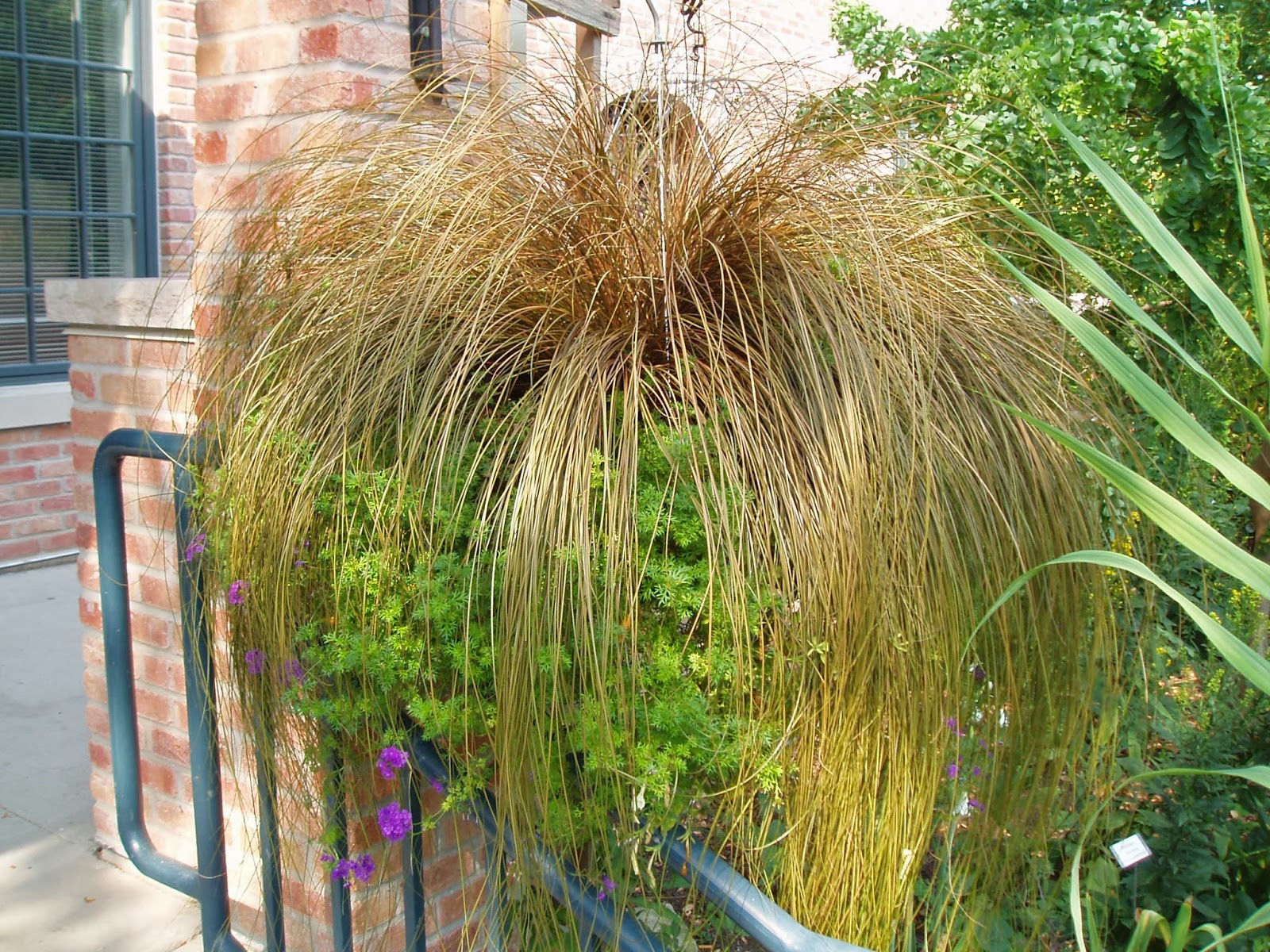Today was another arctic one with the thermometer reading -13 degrees F this morning. The wind chill was also brutal but it sounds like we'll be on the upswing with increasing temperatures towards the end of the week. The fact that the water pipes in my basement haven't burst (knock on wood) is only due to the judicious and expensive use of space heaters! The gardens were closed again today but will re-open tomorrow. We did have some action at the Horticulture Center with Larry and Bill working on various projects. Dr. Gredler and Pat did some painting and Maury ran errands for us and did some troubleshooting regarding heating issues. We also saw Urban and had our first Home Garden Tour (HGT) Committee meeting of the year with Tom S., Sue S., Barb, Jean, Cora, Linda, Bill O. and Dave G. The good news is that we have all our HGT gardens (nine) squared away and mark July 12th, 2014 on your calendars for this popular event and fundraiser.
My blog today pays tribute to the use of the commonly called "dead sedges" like 'Bronzita' (Carex flagellifera) seen above. These grasses are called "dead" due to their copper-bronze coloration. However, these grasses can be very effective in the full or part sun border and for a wide range of container uses as evidenced below. Their coloration combines well with yellows, red, oranges and will not be overlooked if used effectively. The image below (borrowed from the blog of Diane Furgurson, her photo) shows Mali the Sheepdog at the Montreal Botanical Garden. This mosaiculture (look this term up and see the cool things happening with plants...) puppy was made with the same grass seen above. We use the dead sedges as annuals but have seen some come back with warm winters and plenty of snow cover. Everything shown here is hardy in zone 7 and warmer. It is important to note that these grasses will keep their color well in to late November and are superb for extended interest or in the late season container. We find these grasses do the best in full sun in moist, well-drained soils. We've not observed any sort of flowering with these sedges during our growing season but they are selected primarily for foliage color, texture and form. The two primary species I'm featuring are Carex flagellifera which gets around 15" tall and Carex buchananii which can get close to 24" or so. Moisture, fertilizer and sun exposure are all factors in the ultimate size and vigor of these selections.
I'm a big fan of the leatherleaf sedge (Carex buchananii) as seen above as a textural contributor in this tropical composition. This grass relative has a nice narrow leaf blade and can be used as the centerpiece of a small or medium container. Even a solitary specimen (see directly below) can be effective. Used in repetition along a sunny border, this selection will lead the eye and add billowy texture as well. There are some nice named selections of this species which we plant by the hundreds every year. We've done larger plantings of this species en masse and the effect is dazzling. The varieties 'Red Fox' and 'Red Rooster' tend to be a bit more upright and have more of a "reddish cast" (see 'Red Rooster' below). There is a green form (Carex buchananii f. viridis 'Green Twist') but it doesn't excite me like the bronze/red selections.
'Red Fox' leatherleaf sedge (Carex buchananii)
'Red Rooster' leatherleaf sedge (Carex buchananii)
'Red Rooster' leatherleaf sedge (Carex buchananii) in container
from left to right - 'Red Fox', straight species in center and 'Red Rooster' to the right
crazy use of leatherleaf sedge (Carex buchananii) in re-purposed PVC pipe planters (at RBG)
We also use a lot of drooping sedges or weeping brown sedges (Carex flagellifera) as it is called. Their value in containers is very evident in the photos included here. 'Bronzita' seen in the top photo is a variety that is quite popular although I think they all look pretty similar. The variety above and most of those below are probably the variety 'Toffee Twist' which is certainly a must have. Their best effect with this drooping form is in a location (container, wall edge, hanging basket, etc.) where they can be free to spill over. When we use them in containers, we very frequently see visitors touching them as they are a "tactile magnet" too! However, we have used them in the ground and as seen below, they look like a clump of hair emerging out of the soil!
not exactly sure which "dead sedge" is in the middle but what a nice grassy medley (Olbrich Botanical Gardens, Madison, WI)
Although not the same coppery color as those mentioned above, the orange New Zealand sedge (Carex testacea) has its own value and impact in the full sun garden as well. This species will get about 18"-24" tall (depending on moisture and other happiness factors) and as seen both above and below, has a nice orange casting to the foliage. The variety 'Prairie Fire' can be seen above (and second photo below) and is thought to have brighter coloration than the standard species. Hardy to zone 6, we've seen these come back on occasion although their value as an annual should be quite evident. The best coloration is in late summer in to fall.
I just had to share some photos that Marsha M. sent me. She took these at home yesterday and ducked outside in the arctic chill to capture this squirrel and hawk? Is this a hawk or other small bird of prey? Regardless, great shots Marsha and thanks for sharing. We could put captions on both these animals with something like "I've had enough of winter already!!!".






.jpg)











f.jpg)
.jpg)




1 comment:
I asked a fellow photographer about this bird's identity. He said it's a sharp-shinned hawk. I learn something new every day!
Post a Comment